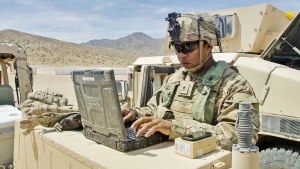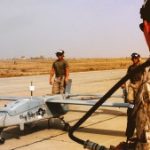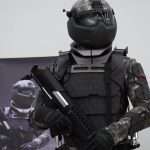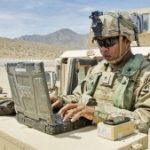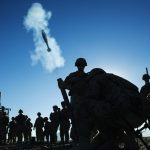How America’s New Cyber Foot Soldiers Are Put Through Their Paces
Two hours northeast of the sound-canceling “hush houses” of Palmdale, where newly developed jet engines are tested, lies the Army’s Fort Irwin National Training Center in the desert south of Death Valley. It’s here that America’s freshest cyber warriors are put through their paces and where troops are trained to use and respond to the new weapons of war: software tools that can disrupt the operations of a tank or an aircraft, take over the controls of a dam, bring down a power grid, or insinuate themselves into a communications channel in order to send a message that appears to come from a fellow soldier or commanding officer but which really emanates from an adversary’s HQ.
None of this is fiction; it is happening today, both on training grounds like Fort Irwin and on battlefields around the world. Of the Army’s 41 cyber mission teams, 34 are already fully operational, says Brigadier General Joseph McGee, Army Cyber Command’s Deputy Commander for Operations. Their top priority is defending military information and operations networks from attacks. But cyber operations have now become part of all phases of any military operation.
McGee says: “This is not just about us going in and knocking out an adversary’s capability. We also architect and defend the networks that enable us to do global operations. If you talk to our soldiers who are right now involved in combat operations, they will tell you that they’re on the cutting edge of what’s happening, both in terms of the combat operations and in terms of the technology. And they’re living in an operational environment that’s constantly evolving and changing.”
With the ability to do things like selectively target portions of an adversary’s power grid or communications network, the DoD’s new cyber assault forces could have a significant impact on the battlefield, potentially acting as virtual advance troops clearing the way for a “kinetic” assault by more conventional troops. But Pentagon commanders have yet to align on rules of engagement and best practices–or even what equipment is best to send teams into the field with. And with USCYBERCOM spanning something like a dozen commands across the Army, Navy, Air Force, and Marines, integrating the many disparate systems, training regimens, and command doctrines is another thorny problem that’s yet to be grappled with.
To help tackle such problems, the Army has created a new Military Occupational Specialty (MOS) that allows qualified civilians to join Army Cyber Command as commissioned officers, rather than having to enlist as privates with no real sense of what their operational area will become. The hope is that bringing cyber operators in at a higher level will help attract the kind of Silicon Valley-caliber software talent the armed forces are badly in need of. To get a sense of how seriously the Army takes this task, consider: The last new MOS the Army created was Special Forces, in 1987. For many branches, MOS codes are badges of identity and honor: it’s not uncommon to find soldiers sporting tattoos displaying codes like 19 Delta for Army cavalry scouts, or, perhaps most iconic, 0311 for Marine riflemen. (“This is my rifle. There are many like it, but this one is mine…”). Don’t be surprised to see a 17 Charlie on a cyber operations specialist’s arm before long. (“This is my laptop…”)
Mark Wallace‘s work has appeared in The New York Times magazine, the weekend Financial Times, and the Philadelphia Independent, among many others. He lives in San Francisco.
Inside the military training facility south of Death Valley in California where troops are trained to use the new weapons of war: software tools
Two hours northeast of the sound-canceling “hush houses” of Palmdale, where newly developed jet engines are tested, lies the Army’s Fort Irwin National Training Center in the desert south of Death Valley. It’s here that America’s freshest cyber warriors are put through their paces and where troops are trained to use and respond to the new weapons of war: software tools that can disrupt the operations of a tank or an aircraft, take over the controls of a dam, bring down a power grid, or insinuate themselves into a communications channel in order to send a message that appears to come from a fellow soldier or commanding officer but which really emanates from an adversary’s HQ.
Fast Company , Read Full Story
(26)

